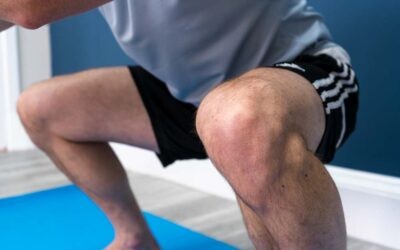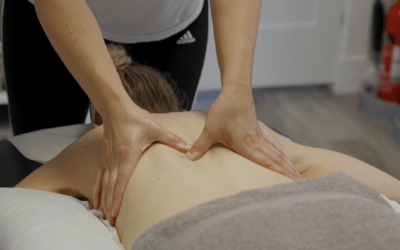Management of Patellofemoral pain
What is Patellofemoral Pain?
Patellofemoral Pain or PFP has been defined as pain around or behind the patella (knee-cap) with pain on palpation or compression of the patella without any other signs of knee pathology (Brushoj et al 2008).
Patellofemoral pain is one of the most common musculoskeletal complaints, affecting 15% of runners and 30% of cyclists. 1 in 4 people will have PFP at some point during their life. 
PFP is often termed ‘maltracking’ of the patella. This is however a term which we avoid using at Optimal Physio. We have to consider the track (trochlea) and the train (patella). The hip, foot and ankle should be assessed as dynamic or muscular control and anatomy can affect the trochlear or patellar position and therefore how it is loaded.
Development of PFP
There is usually no one specific injury that causes PFP. Changes in training load, intensity and frequency and commonly lead to PFP. There are many risk factors for PFP and it is the combination of some of these factors that tend to lead to PFP. It is possible to have one or two of the risk factors without PFP. Risk factors can include weight, deconditioning, anatomy, biomechanics and sudden changes to load.
Reduced muscle strength and flexibility in the quadriceps and calf have been associated with a higher risk of developing PFP. Anatomical factors can be relevant and an assessment should include the hip, knee ankle and foot.
Chronic PFP
Those with daily knee pain which has been present for more than 12 months have a poorer prognosis. The sooner you seek help, the better your prognosis.
Persistent pain can lead to fear of movement or activity, which can lead to pain inhibition and deconditioning. This negative cycle can reduce the chance of a successful outcome. Good education and a persistent and consistent approach is required.
People often believe that the noises that arise from the PFJ are damaging. Your knee may make a noise, however research has shown that this phenomenon, called crepitus, is normal and is not linked to pathology.
Worrying about your pain is not helpful. Sometimes the language used by health professionals, albeit with good intentions, can be confusing and lead to avoidance of activities because of fear of further pain and damage.
Rehabilitation
Individual risk factors will be addressed and tailored to you. Physiotherapy may include education, orthotics, taping and pain relief. Your therapist will tailor an exercise programme specific to your needs.
 We recommended that strength training is undertaken 3 times per week to allow for suitable recovery. Appropriate attention should be given to concentric, isometric and eccentric strengthening prior to plyometric or functional activity. These loading phases must be controlled and pain free, before progressing to the next stage.
We recommended that strength training is undertaken 3 times per week to allow for suitable recovery. Appropriate attention should be given to concentric, isometric and eccentric strengthening prior to plyometric or functional activity. These loading phases must be controlled and pain free, before progressing to the next stage.
A reasonable time frame to rehabilitate PFP would be 6 months to notice improvements in function and a reduction in pain. Imaging (x-rays, MRI scans) are largely unhelpful in PFP and would not usually be undertaken before a period of rehabilitation.
Cyclists
A saddle being too low would naturally increase knee flexion and high quadriceps tendon forces resulting in a high PFJ reaction force thus generating PFP. A saddle position that is too high is more likely to cause ITB issues or hamstring tendonitis (Kronish, 1998). Bike set up is crucial when assessing biomechanical causes of knee pain. Cyclists are usually very aware of changes to training volume, intensity, cadence, and duration. As a result some amateur cyclists neglect conditioning work from an injury prevention perspective and can undervalue the importance of addressing any reduction in flexibility.
Runners
2.5million runners will have PFP diagnosed in any one year. For the runner, recent research has been encouraging relating to retraining during the management of PFP. Increasing cadence and decreasing stride length through audio and visual cues has shown a reduction in peak hip adduction and PFJ stress (Willy et al, 2015). Your therapist should tailor exercises specific to running including strength training and flexibility.
Alternative Treatment
Rehabilitation can be limited by pain and some medical interventions such as pain relief or injection may create a rehabilitation window to address any strength deficit or biomechanical limitations. PRP and hyaluronic acid injections have been gaining in popularity within patients with arthritic or degenerative changes however more research is required. Injections on their own, usually only provide short term benefits so caution should be applied with patients expectations and the emphasis should be on any injection aiding and complimenting rehabilitation rather than being a cure.
Nutrition can also play a role in successful rehabilitation. Every rehabilitation process requires the raw materials for repair. The nutrients include protein, omega 3 fatty acids and vitamin D. A vitamin D deficiency in particular can be a problem in Scotland!
PFP can be a difficult condition to live with. Careful analysis of training habits and a comprehensive assessment with a properly designed and controlled rehabilitation programme which incorporates a full biosphychosocial approach will give the best opportunity for a successful outcome.
Address the cause, strengthen to appropriate level to cope with the load required for the activity and improve flexibility always provides a good starting point.
So if you have patellofemoral pain I’ll see you in the gym but pay attention to your loading strategies!


0 Comments